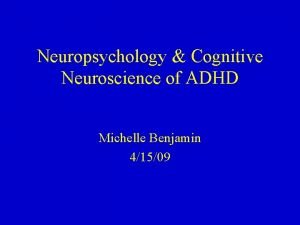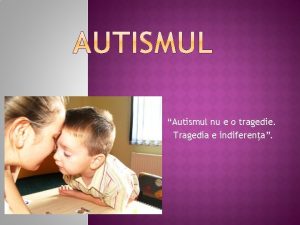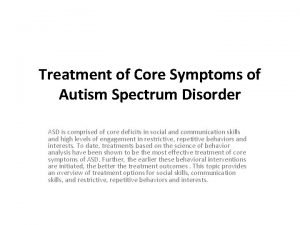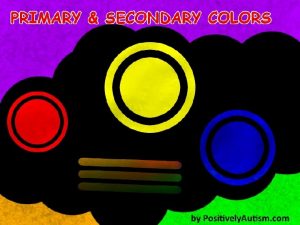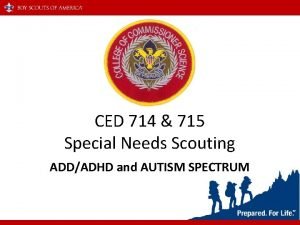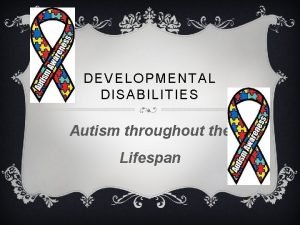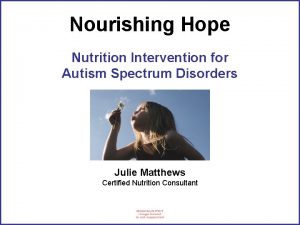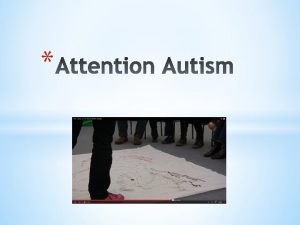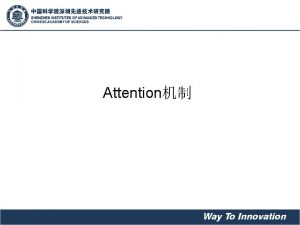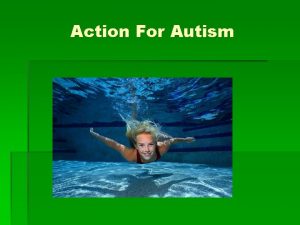ATTENTION AUTISM 2017 What is Attention Autism It








- Slides: 8

ATTENTION AUTISM 2017

What is Attention Autism? It is a highly motivating and creative approach to building attention and early communication skills. So the activities need to be motivating, a shared experience and worth communicating about. Can be used with any child, not just those with autism. Staff need to use their own involvement as a model showing pupils how to join in and demonstrate what is expected. It is important that all in the room join in as if they don’t this shows the children that they can opt out.

Use pictures to. . . Share the message clearly. Lower anxiety by showing expectations. Add structure. Make it easier for pupils to take the risk and join in.

Attention Autism Stages Stage 1: The Bucket � Focus attention. Stage 2: The Attention Builder � Sustain Stage 3: The Attention Game � Shift attention (turn taking activities). Stage 4: The Table Activities � Transition.

Stage 1: The Bucket Focus the pupils attention and enthusiasm on an adult led agenda. It is important to note that it is your bucket and so you shouldn’t give the toys to the child as this breaks concentration and the connection between the pupil and adult. The bucket stage should be: � Filled with fascinating little toys. � Delivered with passion and enthusiasm. � Short but successful. � Fun for you and the child.

Stage 2: Attention Builder Stage 2 is the attention builder and it teaches children to sustain their attention. You should offer an activity that has a sequence building to a final fantastic experience. Should be: � Highly visual activities. � Highly appealing activities. � The only thing available. � Delivered on the adults agenda.

Stage 3: Turn Taking Stage 3 teaches a child how to shift their attention. It is important that you. . . � Use the structure of attention building activities. � Use demonstration to be sure the child knows exactly what to do. The activity should be highly desirable and great to watch.

Stage 4: Table Activities Stage 4 teaches children to shift and refocus their attention for an individual activity and then back to sharing their attention with others. It is important: � To use demonstration to ensure understanding of what is expected as pupils will complete the same activity as they watched the teacher do. � That the activities are those the child is interested in. � That the children have structured access to
